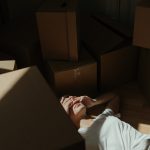Philosophy Meets Science – Mental Health in a Pandemic: Tending to Peace of Mind in Unprecedented Times
CHRIS D. MELETIS, ND
Over the last 2 years, we have experienced the burden of living in the COVID era. There is no psychological preparation for such an event. There is constant uncertainty. There is also fear, sensationalized media, employment changes, and isolation. We hear stressful sayings such as “the new normal” and “loss of loved ones.” It’s no wonder that the pandemic is promoting a state of poor mental health. Our hypothalamic-pituitary-adrenal (HPA) axes and autonomic nervous systems are under a great deal of pressure these days.
Not only has stress increased, but barriers to some of our normal coping mechanisms – like social interactions and physical contact – have been put up as a consequence of social distancing and having to wear masks. Helping patients cope with these kinds of difficulties is critical to improve their adaptive capacity. There are many ways we can do this, including ensuring the health of the autonomic nervous system, reducing hypoxia, supporting the microbiome, enhancing the endocannabinoid system, tending to the mitochondria, and replenishing nitric oxide levels. Reducing stress is critical for wellness because poor mental health is not just a psychological problem, it can also fuel chronic disease.
Stress and the ANS
Psychological stress activates 2 major pathways: the hypothalamic-pituitary-adrenal (HPA) axis and the autonomic nervous system (ANS). The HPA axis often gets the lion’s share of attention when it comes to stress. However, ensuring the ANS is working optimally is crucial. The ANS is comprised of the sympathetic nervous system (SNS), which is activated during stress, and the parasympathetic nervous system (PNS), which is active at more restful times, such as when digesting a meal.
The sympathetic nervous system is best known for the fight, flight, or freeze response. The freeze response is when people react more like a deer in the headlights with a frozen-in-time feeling. During chronic stress the sympathetic nervous system can remain activated without counteraction of the parasympathetic nervous system.1 This can trigger the immune system to respond with elevated levels of pro-inflammatory cytokines.1 This is important because indoleamine 2,3-dioxygenase, an enzyme that is enhanced by pro-inflammatory cytokines, converts tryptophan to kynurenine in the kynurenine pathway. An increase in indoleamine 2,3-dioxygenase activity contributes to an imbalance in kynurenine metabolites, causing neurotoxic alterations in the brain and a susceptibility to depression.1
The kynurenine pathway also produces a critical nutrient, NAD+, which is present in all living cells and is an essential coenzyme.2 NAD+ is a substrate for a group of enzymes that govern various critical biological processes, and NAD+ is produced from the breakdown of tryptophan via the kynurenine pathway.2 Taken as a supplement, nicotinamide riboside is converted into NAD+ in the liver and intestines. Nicotinamide supplementation is considered a potential therapeutic target for modulating inflammation and reactive oxygen species (ROS), both of which are relevant to mitigating increased levels of stress.3
Hypoxia’s Effects on Mental Health
The human brain uses a lot of oxygen. Despite making up only 2% of total body mass, the human brain consumes 20% of the body’s total oxygen supply.4 Hypoxia, like what is caused by sleep apnea for example, may exacerbate depression and increase cognitive impairment.5 Another example of hypoxia possibly being linked to depression is found in communities living in high altitudes.6 In high-altitude communities in the United States, there is an increased risk of depression and suicidal ideation. One hypothesis is that hypoxia contributes to low serotonin production.6 On the other hand, deep breathing has been shown to significantly improve depression scores.7
Research has revealed that extended mask wearing (longer than 4 hours) leads to a significant drop in oxygen levels, which is another way the pandemic could be increasing depression rates and/or reducing our capacity to deal with increased stress.8 In a 2021 review, researchers found evidence of a Mask-Induced Exhaustion Syndrome (MIES), otherwise known as “mask fatigue.”8 In this study, there was a significant relationship between a drop in oxygen, fatigue, and mask-wearing.8 Specifically, N95 masks caused an increase in CO2 levels, a decline in oxygen, headaches, and respiratory impairment.8 The health impact of wearing a mask for people with a history of restrictive airway disease is also currently being debated. Risk/benefit profiles may need to be adjusted for populations already experiencing chronic hypoxia.
Mental Health and the Microbiome
There is an established connection between psychological stress, mental health issues, and the microbiome. This relationship is known as the gut-brain axis. The microbiota is recognized as a critical player in regulating the gut-brain axis, especially when we are under stress.9 The gut microbiota communicates with the brain in several ways:9
- Vagal nerve afferent signaling
- Immune system regulation
- Gut hormone signaling
- Tryptophan metabolism
- Metabolite production such as short-chain fatty acids
There is an association between gut microbiota dysbiosis and stress-related mental health disorders such as anxiety and depression.9 The concept of psychobiotics, which target the microbiota to improve mental health, is being studied to address stress and enhance mental well-being.9 Changes to the gut microbiome in early development may influence how one responds to stress, which can cause long-term, stress mediated effects on behavior.9 Since it is impossible for patients to avoid stress entirely, a high-quality probiotic that can address dysbiosis could help mitigate stress and improve adaptive capacity.
Stress Impacts Digestion
When a person is under stress, they are most often going to have increased sympathetic nervous system tone. However, it takes parasympathetic nervous system dominance for digestion. When we lack ANS homeostasis, there are changes in:10
- Transit time
- Digestive capacity
- Blood perfusion
- Nutrient absorption
- Intestinal permeability
- Stomach acid production
To help patients visualize the SNS versus PNS state while eating, I ask them to compare 2 different rabbits looking for food. One of the rabbits is peacefully enjoying a stress-free day frolicking in a field of clover under the sun (a parasympathetic state). The other rabbit is in the same field, being chased by a predator and in a hypervigilant state (a sympathetic state). Too often, when we eat our meals, we are in the hypervigilant, sympathetic state. Yet there is no predator, and we aren’t being chased. What is causing this hypervigilance? Constantly checking our cell phones, getting notifications that we have an email from a boss, co-worker, or client, watching stressful TV, or doing the caretaking of an elder or child while eating – all of these things can put someone into such a state. One of the most important things I recommend for patients regarding digestion is to create gastrocephalic preparedness. I ask them to slow down and to prepare the mind and body by thinking thoughts like, “it is time to become nourished.” I recommend they also try to focus on gratitude. These simple mindset shifts can help move someone move from SNS to PNS functioning and improve digestion in the process.
Another practice that can help promote parasympathetic tone and maintain PNS dominance while eating is mindfulness. Mindful eating is defined as “the act of eating while being in a state of non-judgmental awareness, shifting one’s attention to the food and mind-body connection.”10 Some mindful eating practices include: eating slowly, meditating or breathing before a meal, engaging the senses of taste and smell, and eating at a clear table free from electronic devices or other distractions.10
The Mitochondria’s Role in Mental Health
Another factor that is critical for mental health and stress is the mitochondria, the energy source for our cells. It takes energy to have an emotional response. Eventually, riding the emotional highs and lows of acute or chronic stress can take a toll on the body. It also takes energy to produce the hormones and neurotransmitters that are needed to cope with stress. Patients may not even be aware of the physiologic consequences of the energy that is being expended when dealing with their emotional states.
When the mitochondria are impaired, associated mental disorder and neurological disorders can result. Most often these manifest as cognitive decline, chronic psychological stress, and fatigue.11 Providing further connection between faulty mitochondria and mental health conditions are the studies documenting that people diagnosed with inherited mitochondrial disorders have a 50% to 70% likelihood of developing a psychiatric condition at some time in their lives.11 Those with an ATP transport impairment were also shown to have resting levels of catecholamines that were doubled when compared to healthy controls.12
Supplementation with nicotinamide riboside is an excellent way to preserve mitochondrial health.13 As an NAD+ precursor, it may protect against other age-related defects in addition to mitochondrial dysfunction.13 Encouraging patients to engage in stress-reduction measures and to eat a healthy diet can further assist healthy mitochondrial function.14,15
The Endocannabinoid System and Stress
The endocannabinoid system is considered a gatekeeper of the HPA axis.16 The operation of the endocannabinoid system is tied to HPA axis function by its role in maintaining homeostasis.17,18 Substances like cannabidiol (CBD) act on the endocannabinoid system, which in turn can affect the HPA axis and contribute to positive changes like reducing anxiety.19,20,21 CBD has also been shown to promote sleep within the first month of use, but with mixed levels of benefit for the following months.21 CBD may further help with mood through its interactions with dopamine receptors.22,23
The Importance of Nitric Oxide
Nitric oxide (NO) is a gaseous molecule produced in the body from dietary nitrate. NO is best known for its role in vasodilation, but it also plays an essential role in nervous system health and neurotransmission.24 Brain-derived NO regulates neurotransmitters such as serotonin, glutamate, and GABA.25 Experimental and clinical data suggest that NO may modify anxiety-like behavior induced by stimuli.26 In other studies it has been shown that long-lasting psychological stress and depression reduce NO production.27
Unfortunately, NO levels in the body decline significantly with age.28 Supplementation with a nitrate-rich supplement that boosts nitric oxide levels, such as fermented beetroot, can help counteract this decline and optimize mental health.29
These Are Unprecedented Times
We have all been living through and living with the unique challenges of the pandemic. Tending to our patients’ peace of mind is one of the most important ways to ensure they remain emotionally and physically healthy. During times of increased stress and mental anguish, our patients need to optimally fuel their endocrine and neurotransmitter pathways. The reality is that the last 2 years have not been easy for any of us, and the impacts on our collective psyche will have long-lasting effects. Strategies like optimizing levels of NAD+, supplementing with probiotics and CBD oil, and replenishing nitric oxide levels can address the diverse ways stress impacts mental and physical health. Though humanity has suffered, we still have much to be grateful for. We must relish the opportunity we have to offer hope and inspiration to our patients. If we are to help those most in need, we must also remain present as part of our mindful appreciation of surviving – and hopefully thriving – during these unprecedented times.
References
- Won E, Kim YK. Stress, the Autonomic Nervous System, and the Immune-kynurenine Pathway in the Etiology of Depression. Curr Neuropharmacol. 2016;14(7):665-673.
- McReynolds MR, Wang W, Holleran LM, Hanna-Rose W. Uridine monophosphate synthetase enables eukaryotic de novo NAD+ biosynthesis from quinolinic acid. J Biol Chem. 2017;292(27):11147-11153.
- Braidy N, Berg J, Clement J, et al. Role of Nicotinamide Adenine Dinucleotide and Related Precursors as Therapeutic Targets for Age-Related Degenerative Diseases: Rationale, Biochemistry, Pharmacokinetics, and Outcomes. Antioxid Redox Signal. 2019;30(2):251-294.
- Rink C, Khanna S. Significance of brain tissue oxygenation and the arachidonic acid cascade in stroke. Antioxid Redox Signal. 2011;14(10):1889-1903.
- Kerner NA, Roose SP. Obstructive Sleep Apnea is Linked to Depression and Cognitive Impairment: Evidence and Potential Mechanisms. Am J Geriatr Psychiatry. 2016;24(6):496-508.
- Kious BM, Kondo DG, Renshaw PF. Living High and Feeling Low: Altitude, Suicide, and Depression. Harv Rev Psychiatry. 2018;26(2):43-56.
- Chung LJ, Tsai PS, Liu BY, et al. Home-based deep breathing for depression in patients with coronary heart disease: a randomised controlled trial. Int J Nurs Stud. 2010;47(11):1346-1353.
- Kisielinski K, Giboni P, Prescher A, et al. Is a Mask That Covers the Mouth and Nose Free from Undesirable Side Effects in Everyday Use and Free of Potential Hazards? Int J Environ Res Public Health. 2021;18(8):4344.
- Foster JA, Rinaman L, Cryan JF. Stress & the gut-brain axis: Regulation by the microbiome. Neurobiol Stress. 2017;7:124-136.
- Cherpak CE. Mindful Eating: A Review Of How The Stress-Digestion-Mindfulness Triad May Modulate And Improve Gastrointestinal And Digestive Function. Integr Med. 2019;18(4):48-53.
- Kramer P, Bressan P. Our (Mother’s) Mitochondria and Our Mind. Perspect Psychol Sci. 2018;13(1):88-100.
- Picard M, McEwen BS. Psychological Stress and Mitochondria: A Conceptual Framework. Psychosom Med. 2018;80(2):126-140.
- Mehmel M, Jovanović N, Spitz U. Nicotinamide Riboside-The Current State of Research and Therapeutic Uses. Nutrients. 2020;12(6):1616.
- Gautam S, Kumar U, Kumar M, et al. Yoga improves mitochondrial health and reduces severity of autoimmune inflammatory arthritis: A randomized controlled trial. Mitochondrion. 2021;58:147-159.
- Venkatesh HN, Ravish H, Wilma Delphine Silvia CR, Srinivas H. Molecular Signature of the Immune Response to Yoga Therapy in Stress-related Chronic Disease Conditions: An Insight. Int J Yoga. 2020;13(1):9-17.
- Gorzalka BB, Hill MN. Integration of endocannabinoid signaling into the neural network regulating stress-induced activation of the hypothalamic-pituitary-adrenal axis. Curr Top Behav Neurosci. 2009;1:289-306.
- Riebe CJ, Wotjak CT. Endocannabinoids and stress. Stress. 2011;14(4):384-397.
- Hill MN, Patel S, Campolongo P, et al. Functional interactions between stress and the endocannabinoid system: from synaptic signaling to behavioral output. J Neurosci. 2010;30(45):14980-14986.
- de Faria SM, de Morais Fabrício D, Tumas V, et al. Effects of acute cannabidiol administration on anxiety and tremors induced by a Simulated Public Speaking Test in patients with Parkinson’s disease. J Psychopharmacol. 2020;34(2):189-196.
- Bergamaschi MM, Queiroz RH, Chagas MH, et al. Cannabidiol reduces the anxiety induced by simulated public speaking in treatment-naïve social phobia patients. Neuropsychopharmacology. 2011;36(6):1219-1226.
- Shannon S, Lewis N, Lee H, Hughes S. Cannabidiol in Anxiety and Sleep: A Large Case Series. Perm J. 2019;23:18-41.
- Seeman P. Cannabidiol is a partial agonist at dopamine D2High receptors, predicting its antipsychotic clinical dose. Transl Psychiatry. 2016;6(10):e920.
- Spanagel R. Cannabinoids and the endocannabinoid system in reward processing and addiction: from mechanisms to interventions. Dialogues Clin neurosci. 2020;22(3):241-250.
- Džoljić E, Grbatinić I, Kostić V. Why is nitric oxide important for our brain?. Funct Neurol. 2015;30(3):159-163.
- Pałasz A, Menezes IC, Worthington JJ. The role of brain gaseous neurotransmitters in anxiety. Pharmacol Rep. 2021;73(2):357-371.
- Gulati K, Rai N, Ray A. Nitric Oxide and Anxiety. Vitam Horm. 2017;103:169-192.
- Ritz T, Salsman ML, Young DA, et al. Boosting nitric oxide in stress and respiratory infection: Potential relevance for asthma and COVID-19. Brain Behav Immun Health. 2021;14:100255.
- Torregrossa AC, Aranke M, Bryan NS. Nitric oxide and geriatrics: Implications in diagnostics and treatment of the elderly. J Geriatr Cardiol. 2011;8(4):230-242.
- Clifford T, Howatson G, West DJ, Stevenson EJ. The potential benefits of red beetroot supplementation in health and disease. Nutrients. 2015;7(4):2801-2822.

Chris D. Meletis, ND is an educator, international author, and lecturer. He has authored 18 books and more than 200 scientific articles in prominent journals and magazines. Dr Meletis served as Dean of Naturopathic Medicine and CMO for 7 years at NUNM. He was recently awarded the NUNM Hall of Fame award by OANP, as well as the 2003 Physician of the Year by the AANP. Dr Meletis spearheaded the creation of 16 free natural medicine healthcare clinics in Portland, OR. Dr Meletis serves as an educational consultant for Fairhaven Health, Berkeley Life, TruGen3, US BioTek, and TruNiagen. He has practiced in Beaverton, OR, since 1992.










